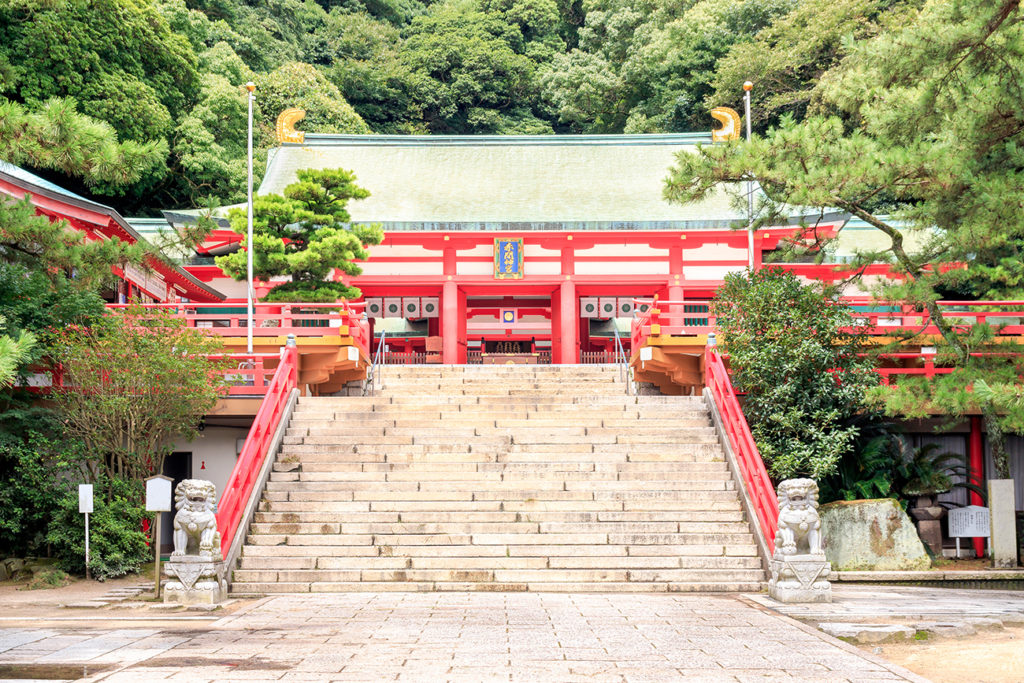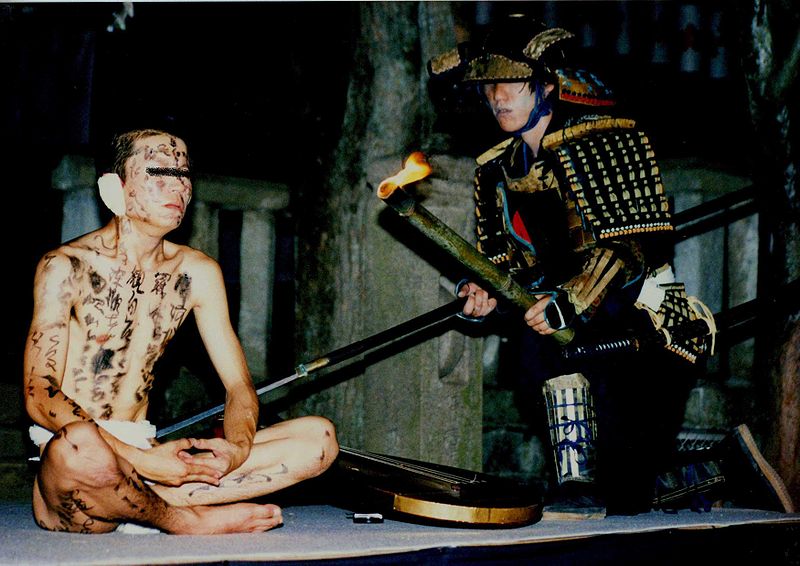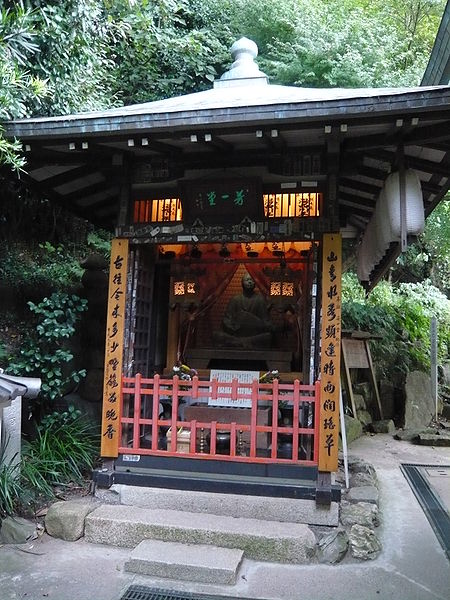
The Story of Hoichi the Earless
Hundreds of years ago, there was an epic sea battle in Dan-no-ura that took many lives. The battle took place in the Straits of Shimonoseki, off the southern tip of Honshū, between the Heike (Taira clan) and the Genji (Minamoto clan). After half a day of battle, the Genji defeated the Heike, and many perished in the encounter including women, children, and the infant emperor, Antoku Tenno. The area where the great battle occurred is known to be haunted. Strange things can be seen and heard along the shores, and on dark nights ghostly fires, which people call “demon fires” or oni-bi, hover along the waves and the beach. The area is known to harbor restless spirits even today.
 There is a Japanese legend of a blind yet gifted biwa player from Akamagaseki named Hoichi. He was known for his skills in reciting the Tale of the Heike and the fall of Emperor Antoku while playing the biwa.
There is a Japanese legend of a blind yet gifted biwa player from Akamagaseki named Hoichi. He was known for his skills in reciting the Tale of the Heike and the fall of Emperor Antoku while playing the biwa.
Reenacting Hoichi’s tale. | 松岡明芳
Hoichi was a very poor man but his good friend, the priest of Amidaji, would often ask him to play and recite at the temple. After some time, his friend proposed that Hoichi make the temple his home and play for the priests occasionally.
One evening, Hoichi was approached by a gruff-sounding samurai who requested that he play for his lord. Hoichi could very well not refuse the scary retainer. He led Hoichi to what he thought was the home of a powerful nobleman who asked that he recite the Tale of the Heike for his court. Hoichi’s performance was met with resounding praise. He was asked to return again the next few evenings to continue his lengthy performance which required days to recount the entire tale. Before Hoichi left the court, he was requested to refrain from speaking about what he had been asked to do.
 The next evening, he was again picked up by the samurai and led to his audience. This time however, Hoichi’s absence did not go unnoticed unlike the previous evening. His friend the priest of the Amidaji temple asked servants to keep an eye on Hoichi and determine where he was going. When the servants saw Hoichi leaving the temple, they immediately followed him to the Amidaji cemetery, There they saw Hoichi reciting and playing his biwa in the memorial tomb of Emperor Antoku Tenno.
The next evening, he was again picked up by the samurai and led to his audience. This time however, Hoichi’s absence did not go unnoticed unlike the previous evening. His friend the priest of the Amidaji temple asked servants to keep an eye on Hoichi and determine where he was going. When the servants saw Hoichi leaving the temple, they immediately followed him to the Amidaji cemetery, There they saw Hoichi reciting and playing his biwa in the memorial tomb of Emperor Antoku Tenno.
Hōichi-dō (Miminashi-Hōichi’s shrine) in Akama-jingū, Yamaguchi.
The servants brought Hoichi back to the temple and told the priest what they had witnessed. Realizing that Hoichi had been bewitched by ghosts, the priest painted Hoichi’s entire body with the kanji characters of the Heart Sutra for protection. The priest then told Hoichi to remain completely silent and still the next time the samurai came to summon him for a performance.
Akama Shrine
On the third evening, the samurai came to pick up Hoichi. The samurai called out for him but was met with complete silence. The samurai could only see the biwa and a pair of ears. The kanji characters written all over Hoichi’s body rendered him invisible to the samurai. Well, almost invisible. The only areas where the Heart Sutra was not written on were Hoichi’s ears. The samurai then lopped off Hoichi’s ears as proof for his master that the ears were what remained of Hoichi; hence he could no longer perform for them.
The priest later discovered Hoichi bleeding from his wounds. He was treated and soon recovered, never to be bothered by the ghosts again. His legend lives in the tale known as “Hoichi the Earless.”
